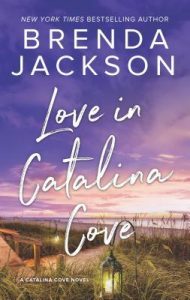 Vashti Alcindor inherits her aunt’s B&B in Catalina Cove, where she grew up, and where she ran away from over a decade ago. She wants to sell the business and put her hometown behind her for good. Enter the sexy, widowed sheriff. Then secrets come flying out of the past, changing Vashti in ways she would never have expected. The secrets are not so surprising, and some are a bit too coincidental, but in the end, a good story is hidden among the unnecessary repetition by multiple characters of Vashtis’ background and overly emoted revelations. A good beach read, a nice weekend romance read, Catalina Cove also shares a bit of Creole history, as it’s set on the coast of Louisiana, with a creole main character. I was graciously given an early copy by Harlequin through NetGalley.
Vashti Alcindor inherits her aunt’s B&B in Catalina Cove, where she grew up, and where she ran away from over a decade ago. She wants to sell the business and put her hometown behind her for good. Enter the sexy, widowed sheriff. Then secrets come flying out of the past, changing Vashti in ways she would never have expected. The secrets are not so surprising, and some are a bit too coincidental, but in the end, a good story is hidden among the unnecessary repetition by multiple characters of Vashtis’ background and overly emoted revelations. A good beach read, a nice weekend romance read, Catalina Cove also shares a bit of Creole history, as it’s set on the coast of Louisiana, with a creole main character. I was graciously given an early copy by Harlequin through NetGalley.
Tag Archives: secrets
Diane Chamberlain—New York Times, USA Today, and Sunday Times Bestselling Author
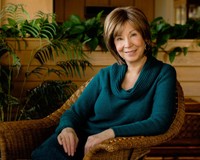 I met Diane in person at a book signing in Topsail Beach at Quarter Moon Books. In my overzealous fangirling,
I met Diane in person at a book signing in Topsail Beach at Quarter Moon Books. In my overzealous fangirling,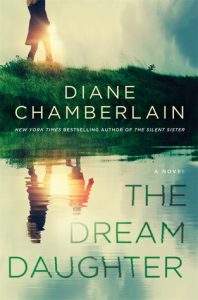 I crashed a book club photo and had to be gently shooed away. I’ve been her most awkward fan since, and she’s been the most gracious literary star. I show up for each new book’s signing / reading like a middle-aged stalker who looks so innocent (muahaha), and Diane keeps smiling and signing my new books. If only she could write super fast; I know I will love each new story. I was fortunate to receive an early copy of The Dream Daughter—my review—coming out October 2.
I crashed a book club photo and had to be gently shooed away. I’ve been her most awkward fan since, and she’s been the most gracious literary star. I show up for each new book’s signing / reading like a middle-aged stalker who looks so innocent (muahaha), and Diane keeps smiling and signing my new books. If only she could write super fast; I know I will love each new story. I was fortunate to receive an early copy of The Dream Daughter—my review—coming out October 2.
Tell me about your writing process—any tricks / nuances to keep you on track, inspirations material or abstract, where you write (Topsail!) and when.
 I usually write either in my Raleigh area sunroom or at my condo on Topsail Island. I generally have a year to write a book. The first few months, I think about my idea and start doing research, often visiting the area where the story takes place. I begin picturing scenes and putting them on post it notes that I move around on a big presentation board until I like the arc of the story, thus creating an outline. At the same time, I think about my characters, specifically what type of person will have the hardest time dealing with whatever dilemma I’ve come up with for the story.
I usually write either in my Raleigh area sunroom or at my condo on Topsail Island. I generally have a year to write a book. The first few months, I think about my idea and start doing research, often visiting the area where the story takes place. I begin picturing scenes and putting them on post it notes that I move around on a big presentation board until I like the arc of the story, thus creating an outline. At the same time, I think about my characters, specifically what type of person will have the hardest time dealing with whatever dilemma I’ve come up with for the story. 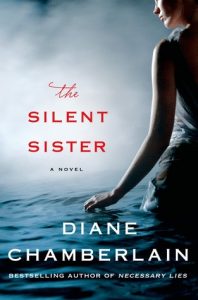 If there is no personal struggle, there is no story. I think about which characters will have a point of view in the story and will they have a first person or third person point of view and will I write the story in present or past tense. I sometimes look on the internet for pictures of people who make me think of my characters. I find this a huge help in creating characters who feel very real to me and hopefully to my readers. These are all decisions I make before I start writing.
If there is no personal struggle, there is no story. I think about which characters will have a point of view in the story and will they have a first person or third person point of view and will I write the story in present or past tense. I sometimes look on the internet for pictures of people who make me think of my characters. I find this a huge help in creating characters who feel very real to me and hopefully to my readers. These are all decisions I make before I start writing.
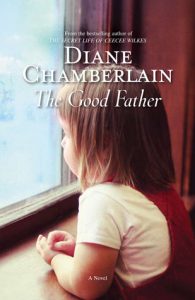 Finally, I start writing about 6 months before my deadline. I usually listen to movie soundtracks as I write because I like the emotional ups and downs of the music. I’m always doing research as I write. Also, I listen to my characters because they frequently go astray from my outline and I’ve learned to pay attention to them. I write three to five drafts. Finally, often a bit late, I turn in the book. That’s where my dynamite editor comes in. She reads the book, looking at the big picture. What works and what doesn’t? She makes many suggestions, sometimes requiring a big change in the book. I’ve learned to listen to her, and I rewrite. And perhaps rewrite yet again.
Finally, I start writing about 6 months before my deadline. I usually listen to movie soundtracks as I write because I like the emotional ups and downs of the music. I’m always doing research as I write. Also, I listen to my characters because they frequently go astray from my outline and I’ve learned to pay attention to them. I write three to five drafts. Finally, often a bit late, I turn in the book. That’s where my dynamite editor comes in. She reads the book, looking at the big picture. What works and what doesn’t? She makes many suggestions, sometimes requiring a big change in the book. I’ve learned to listen to her, and I rewrite. And perhaps rewrite yet again.
Lead me through your publishing process, as in who does what when, and your marketing responsibilities (book tours! What else?).
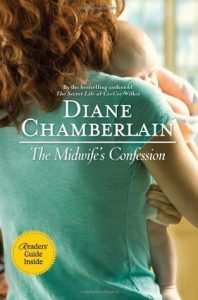 Here’s how it works. First I write a book. Then I have an agent who is responsible for finding the publisher she thinks will do the best job with that book. She is also responsible for negotiating the contract with that publisher. You can see in my answer above some of the work the editor does with regard to my book. The publisher then, of course, publishes the book. If the publisher feels strongly that they can make the book a bestseller, they will give it a lot of advertising and other support before and during publication. My publisher for the last six books, St. Martins Press, does a great deal of promotion for me. I try to hold up my end by keeping up with social media (which I enjoy), giving interviews, touring to speak to groups and do book signings, where I get to meet my readers, the best part of the process!
Here’s how it works. First I write a book. Then I have an agent who is responsible for finding the publisher she thinks will do the best job with that book. She is also responsible for negotiating the contract with that publisher. You can see in my answer above some of the work the editor does with regard to my book. The publisher then, of course, publishes the book. If the publisher feels strongly that they can make the book a bestseller, they will give it a lot of advertising and other support before and during publication. My publisher for the last six books, St. Martins Press, does a great deal of promotion for me. I try to hold up my end by keeping up with social media (which I enjoy), giving interviews, touring to speak to groups and do book signings, where I get to meet my readers, the best part of the process!
Before the Storm series
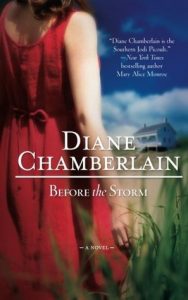
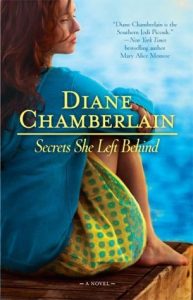
Describe your support system: groups online and IRL (MKA, another favorite author of mine)—your biggest cheerleaders…
 My biggest supporter is my significant other, John. He’s a photographer and understands the creative process and doesn’t complain that once a year, as deadline nears, I disappear from real life into my imagination, 24/7. Aside from him, I have many local writer friends who I get together with often. And then I have my “official group.” We call ourselves The Weymouth Seven because we originally met up at the Weymouth mansion in Southern Pines, NC, where authors are invited to work for up to two weeks each year. Now we usually meet up on Topsail Island. You’re right that Mary Kay Andrews is a big part of our group. She’s our ringleader, the one who keeps us on track during the week that we meet. Other members are mystery writer Margaret Maron, historical mystery writer, Sarah Shaber, horror and thriller writer Alexandra Sokoloff, and mystery writers, Brenda Witchger and Katy Munger. We have fun but we work hard at the same time.
My biggest supporter is my significant other, John. He’s a photographer and understands the creative process and doesn’t complain that once a year, as deadline nears, I disappear from real life into my imagination, 24/7. Aside from him, I have many local writer friends who I get together with often. And then I have my “official group.” We call ourselves The Weymouth Seven because we originally met up at the Weymouth mansion in Southern Pines, NC, where authors are invited to work for up to two weeks each year. Now we usually meet up on Topsail Island. You’re right that Mary Kay Andrews is a big part of our group. She’s our ringleader, the one who keeps us on track during the week that we meet. Other members are mystery writer Margaret Maron, historical mystery writer, Sarah Shaber, horror and thriller writer Alexandra Sokoloff, and mystery writers, Brenda Witchger and Katy Munger. We have fun but we work hard at the same time.
Keeper of the Light series



You’ve always had touches of history in your novels. Recently, you’ve opened up to historical fiction, and now sci-fi / fantasy with your latest book about time travel. How did this come about; in what ways do your life and work influence each other, and how did your previous profession prepare you for fiction writing? Also talk about secrets, their importance to you and your work, and what kind of secrets you like best to weave into your stories.
 When I heard about the eugenics (forced sterilization) program in North Carolina, I knew I had to write about it. That meant setting the story during the years of the program, so I selected 1960 and thus wrote my first novel (Necessary Lies) with a totally historical setting and I found I really enjoyed it. Two books later, I decided I wanted to write about the 1944 polio outbreak in Hickory, NC during which the town built a functioning polio hospital in 54 hours (The Stolen Marriage). So I would say, if the idea that comes to me is historical, I will happily write it, but I am still perfectly happy writing contemporary books as well.
When I heard about the eugenics (forced sterilization) program in North Carolina, I knew I had to write about it. That meant setting the story during the years of the program, so I selected 1960 and thus wrote my first novel (Necessary Lies) with a totally historical setting and I found I really enjoyed it. Two books later, I decided I wanted to write about the 1944 polio outbreak in Hickory, NC during which the town built a functioning polio hospital in 54 hours (The Stolen Marriage). So I would say, if the idea that comes to me is historical, I will happily write it, but I am still perfectly happy writing contemporary books as well.
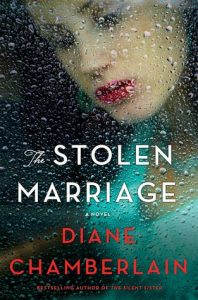 When it comes to The Dream Daughter, that is a whole different subject! For years, I had the idea that’s central in The Dream Daughter: a woman is told that her unborn baby will die, but she learns that if she’s willing to take a huge risk and travel to the future, her baby could very well live. I put this idea off for years because it is so unlike my other books, but finally, I talked to my editor and she gave me the go-ahead. The book was tremendous fun to write and the early reviews have been amazing. I’m grateful to readers who dislike time travel for giving this book a try because it’s still “vintage Diane Chamberlain” and people seem to be loving it.
When it comes to The Dream Daughter, that is a whole different subject! For years, I had the idea that’s central in The Dream Daughter: a woman is told that her unborn baby will die, but she learns that if she’s willing to take a huge risk and travel to the future, her baby could very well live. I put this idea off for years because it is so unlike my other books, but finally, I talked to my editor and she gave me the go-ahead. The book was tremendous fun to write and the early reviews have been amazing. I’m grateful to readers who dislike time travel for giving this book a try because it’s still “vintage Diane Chamberlain” and people seem to be loving it.
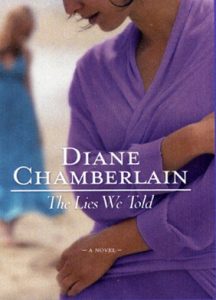 I think your question about my previous profession (clinical social work) and secrets actually go together. I worked in hospitals and then in a private psychotherapy practice with adolescents and their families, and one thing I learned is how destructive secrets can be in a family. I was fascinated by that topic, so it often appears in my stories.
I think your question about my previous profession (clinical social work) and secrets actually go together. I worked in hospitals and then in a private psychotherapy practice with adolescents and their families, and one thing I learned is how destructive secrets can be in a family. I was fascinated by that topic, so it often appears in my stories.
What do you love most about your creativity?
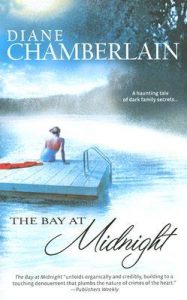 I’m very grateful for my imagination. It got me into tons of trouble as a kid, but now pays off. I might be stopped at a traffic light and see a woman pushing a baby carriage across the street and within 30 seconds, I imagine a car hitting them, and the police discover it was on purpose and there was a connection between the woman and the driver, or maybe even between the baby and the driver . . . it’s exhausting having a brain like this, but it often pays off in the end if it means I can entertain my readers.
I’m very grateful for my imagination. It got me into tons of trouble as a kid, but now pays off. I might be stopped at a traffic light and see a woman pushing a baby carriage across the street and within 30 seconds, I imagine a car hitting them, and the police discover it was on purpose and there was a connection between the woman and the driver, or maybe even between the baby and the driver . . . it’s exhausting having a brain like this, but it often pays off in the end if it means I can entertain my readers.
Connect with Diane:
Book series in order of publication
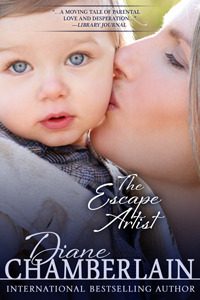
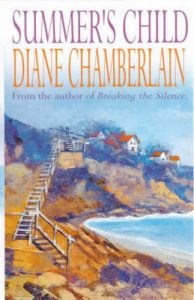
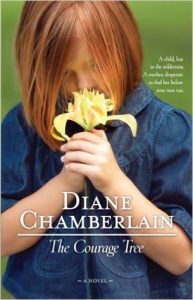

Heather Burch—Bestselling International Author of Contemporary Fiction and YA
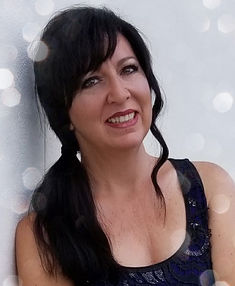 First, let me say thank you for having me, Lael! I love visiting with reader friends and new readers who may not know me yet!
First, let me say thank you for having me, Lael! I love visiting with reader friends and new readers who may not know me yet!
Describe your writing process, including subject, schedule, environment, inspirations, and techniques / strategies.
I have an office in my home that is the backdrop for most of my writing. It’s a large space filled with things I love. But I do change up and write outside sometimes or cart my computer to Starbucks. Change is good. As for my schedule and process, I am an early riser so I do my best work in the mornings before the world is awake. I usually write for a few hours, then take a break. Sometimes I go back to the computer; sometimes I get busy with social networking. When I’m working on a book, I try to stay really close to the project—it’s never far from my thoughts and is always working in the back of my brain. I don’t let it totally dominate, but I do allow that creative magic to flow so that it’s there when I need it!
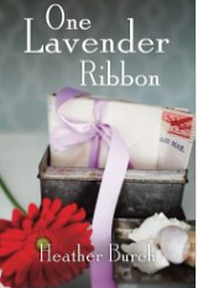
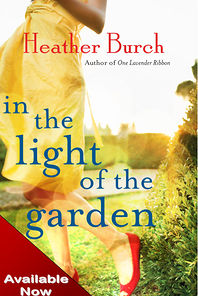

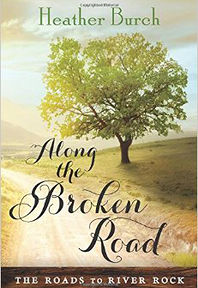
Walk me through your publishing process, from final draft to finished product; include your publishing team, who does what.
I’m always amazed at how many hands are on any particular project. I send the final draft to my editor (each publishing house has their own way of doing things, but these steps are fairly universal). The editor will read, offer suggestions, give feedback, then it’s back to me to decide which elements help make the book stronger and which may not. Round two, she reads again, then passes the project to another editor who will also read—this time for smaller content issues and continuity. A third editor will read for typos and the like. Each editor may go through a manuscript more than once, and the author will tweak with each editorial pass. (By the end, we’ve read our books 6-8 times.)
In the meantime, a creative team is working on items like cover, back jacket copy, marketing strategies.
The author has their hands in each of these processes—which is fascinating! It’s incredible to see your project come to life with so many talented people doing what they are gifted to do!
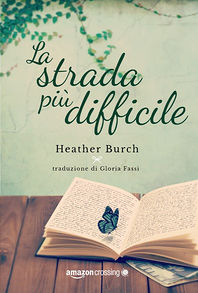
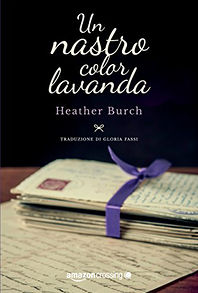

How did you get your novels in so many different languages? That is awesome! I want to know step-by-step and who does what for that to happen, and how your work sells in other countries.
I started getting contacted by international publishers when my book, One Lavender Ribbon released. It’s a contemporary story, but has a WWII tie-in, in the form of love letters from a soldier. Well, the book released over the 70th anniversary of D Day, and I think the world really came together over the events of WWII.
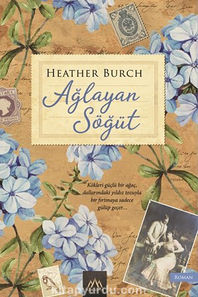
The first time I was contacted, I thought it was a joke. But I sent the email on to my agent and she sent it to my US publisher. Next thing I know, I’m signing a foreign contract. I’m now in about 12 languages—which is just surreal. I sell extremely well in Italy and was named one of the top authors in three Italian cities. Crazy! I’d love to go to Italy and do a book tour! I also sell quite well in Turkey. Fun fact: My book titled In the Light of the Garden is titled The Willow Tree in Turkey. What is fun about that fact? My original title was The Weeping Tree, but the publisher felt like it wasn’t the right title.
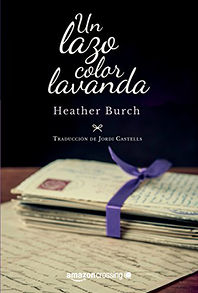
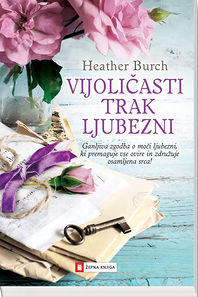


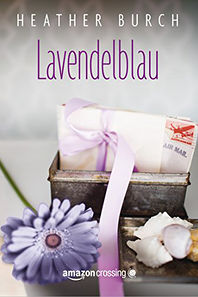
Tell me how your art (writing) and life influence each other; what other talents do you have?
I spend a lot of time “searching” for the perfect story. Everything that comes into my mind is viewed through a writer lens. There are tiny seeds of ideas lurking everywhere! We just have to look around and notice them.
I love to cook, but I wouldn’t call it a talent. My husband and I love to travel. We spend our leisure time dissecting movies and talking about what could have been done differently to strengthen the story. If the story is perfect, we talk about why.
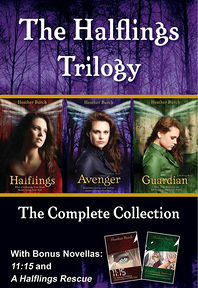
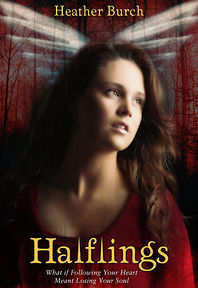

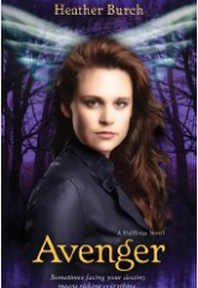
 What do you love most about your creativity, and how does it play into teaching the craft of writing?
What do you love most about your creativity, and how does it play into teaching the craft of writing?
Freedom! When you’re writing, you’re free. Free to change the world or create a new world. Free to roam through the tunnels of time and land anywhere you choose. Reading is the same way. When you’re reading, you’re free. One of the strongest points I make when teaching about writing is to never ever, ever lose your childlike wonder. View the world through a different lens, then write it so we can all come along on the journey with you.
I’d love to stay in touch. Here are the places you can find me.
Website https://www.heatherburchbooks.com/
I hope you’ll add your name to my newsletter list on my website. There are usually at least one of my books on sale for $1.99, and I give the direct links for those in a monthly newsletter. Also, when you sign up, you can request a link to a free book! It’s a story that was written for Princess Cruise Lines.
Other ways to stay in touch…
 https://m.facebook.com/heather.burch.50
https://m.facebook.com/heather.burch.50
https://www.facebook.com/heatherburchbooks
https://twitter.com/heatherburch
https://www.bookbub.com/authors/heather-burch
One Lavender Ribbon by Heather Burch
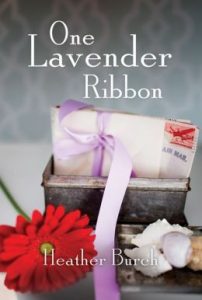 Adrienne leaves an abusive relationship and divorce in Chicago and buys a fixer-upper in Florida, where she starts her new life of independence on the Gulf. A box of eloquently written letters from a WWII soldier in her attic sets Adrienne on a journey to friendship, potential romance, and matchmaking. She exposes decades-old secrets, changing lives and mending relationships while building strong bonds with her new “family.”
Adrienne leaves an abusive relationship and divorce in Chicago and buys a fixer-upper in Florida, where she starts her new life of independence on the Gulf. A box of eloquently written letters from a WWII soldier in her attic sets Adrienne on a journey to friendship, potential romance, and matchmaking. She exposes decades-old secrets, changing lives and mending relationships while building strong bonds with her new “family.”
Burch’s novel reads like a Lifetime or Hallmark movie, with the romance of a soldier’s yearning juxtaposing the horror of his experience in war. The story veers away from the trope of the emotionally intelligent woman succumbing to the stubborn man, when Adrienne informs the romantic interest that his controlling behavior isn’t acceptable, a feminist move proving she learned from her previous relationship. Adamant in this assessment, she continues to nurture the friendships of (his) family. Read this novel to discover a treasure chest of secrets and to find out if the romantic interest redeems himself. I was fortunate to receive a copy from the author for an honest review.
The Italian Party by Christina Lynch
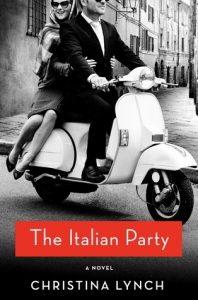 Scottie married Michael and they moved to Siena, Italy, both bringing secrets and gathering more, so that they appear to be a happily married couple, he selling American tractors to Italians and she his adoring housewife. Showing Italians the American Dream fulfills a larger agenda for Michael, while Scottie tries to look behind the curtain and see his true self. She seems to have a lot more freedom than expected for a woman in the mid-50s, and Italian men are portrayed as oversexed political creatures. Homosexuality is handled in a sensitive, if somewhat stereotypical, manner considering the times—adultery is inexplicably given more tolerance. When the couple open up and confess all, they become a team, and Michael learns that political secrets are larger than his own agenda, gobsmacked by his own company. This is a great historical fiction, with Siennese culture, the fallout from being overshadowed by Florence, and the political turmoil of Communism versus pro-Western leaders vividly portrayed. It shows the complexities of the world players’ motives and relationships, and how this plays out in the individual lives of the Italian people.
Scottie married Michael and they moved to Siena, Italy, both bringing secrets and gathering more, so that they appear to be a happily married couple, he selling American tractors to Italians and she his adoring housewife. Showing Italians the American Dream fulfills a larger agenda for Michael, while Scottie tries to look behind the curtain and see his true self. She seems to have a lot more freedom than expected for a woman in the mid-50s, and Italian men are portrayed as oversexed political creatures. Homosexuality is handled in a sensitive, if somewhat stereotypical, manner considering the times—adultery is inexplicably given more tolerance. When the couple open up and confess all, they become a team, and Michael learns that political secrets are larger than his own agenda, gobsmacked by his own company. This is a great historical fiction, with Siennese culture, the fallout from being overshadowed by Florence, and the political turmoil of Communism versus pro-Western leaders vividly portrayed. It shows the complexities of the world players’ motives and relationships, and how this plays out in the individual lives of the Italian people.
I was fortunate to receive a digital copy of this wonderful book from the publisher through NetGalley.
A Fist Around the Heart by Heather Chisvin
 Anna “Bencke” Grieve’s life changed after Tsar Alexander II’s assassination. In fear for their lives as Jews, her mother, a privileged servant, asked her employers Count and Countess Chernovski to take Bencke and her older sister Esther with them to Canada. The Chernovski’s later adopt them, believing their parents to be dead. Bencke does her best to care for Esther, who suffers episodes from traumatic memories that incapacitate her at times, as she herself tries to fit her eccentric personality into Countess Chernovski’s picture perfect household. Decades later, Anna receives a phone call from the Winnipeg police informing her that her sister has committed suicide by stepping in front of a train. She heads to Canada seeking the truth. The story alternates between this investigation and a backstory of a life fully lived, from Anna’s forced relocation to NYC, to circumstances causing her to be deported to Russia during WWI. In the investigation, Anna learns her sister’s secrets and must live with them now.
Anna “Bencke” Grieve’s life changed after Tsar Alexander II’s assassination. In fear for their lives as Jews, her mother, a privileged servant, asked her employers Count and Countess Chernovski to take Bencke and her older sister Esther with them to Canada. The Chernovski’s later adopt them, believing their parents to be dead. Bencke does her best to care for Esther, who suffers episodes from traumatic memories that incapacitate her at times, as she herself tries to fit her eccentric personality into Countess Chernovski’s picture perfect household. Decades later, Anna receives a phone call from the Winnipeg police informing her that her sister has committed suicide by stepping in front of a train. She heads to Canada seeking the truth. The story alternates between this investigation and a backstory of a life fully lived, from Anna’s forced relocation to NYC, to circumstances causing her to be deported to Russia during WWI. In the investigation, Anna learns her sister’s secrets and must live with them now.
Chisvin brings history to life in Anna’s story, as dear reader sees her torn from her family as a child after her country’s leader is killed and Jews are blamed, and as an activist for women’s rights alongside Margaret Sanger. She becomes a part of the melting pot that is NYC, falls into the fear of Americans who deport her in the war, and witnesses the disorder of Russia as essentially an outsider. Chisvin brings closure to Anna in her mixed emotions of finally being free of her sister as it breaks her heart. The last line of the book is brilliant in its imagery of this closure.
I was fortunate to receive a digital copy of this beautiful story from the publisher through NetGalley.
The Zanna Function by Daniel Wheatley—pub date March 20, 2018
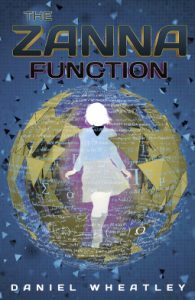 Zanna is accepted into the St. Pommeroy’s School for Gifted Children, where she learns that she is a Scientist, who can bend the rules of physics. A mysterious woman attempts to prevent her from attending the school, and Zanna must draw upon her new abilities, resources, and friends to fight her. The secret she discovers about the woman must be setting Zanna’s story up for a series.
Zanna is accepted into the St. Pommeroy’s School for Gifted Children, where she learns that she is a Scientist, who can bend the rules of physics. A mysterious woman attempts to prevent her from attending the school, and Zanna must draw upon her new abilities, resources, and friends to fight her. The secret she discovers about the woman must be setting Zanna’s story up for a series.
This story sets up the conflict immediately with the mystery woman thwarting Zanna’s attendance at the school through scientific “magic,” carefully detailed by Wheatley. The capabilities taught in the school intrigue Zanna, and the reader needn’t be a scientist to follow along.
I was fortunate to receive a digital ARC through NetGally of this delightful story.
The Stolen Marriage (2017 St. Martin’s Press) by Diane Chamberlain
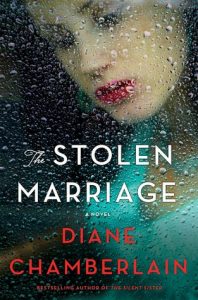 Tess DeMello abruptly leaves Baltimore’s LIttle Italy and expectations of wedded bliss with a man she grew to love throughout her childhood to marry a man from a small southern town, cutting off the future of his expected marriage to a local girl. She has trapped herself in a loveless marriage, alienated by her husband’s family, their friends, and the townfolk. She slowly learns about the enigmatic man she married as she attempts to find her way back to herself against all obstacles, including him. A polio epidemic changes the town, all hearts and minds focused on treating its victims, and Tess DeMello Kraft becomes a highly respected nurse.
Tess DeMello abruptly leaves Baltimore’s LIttle Italy and expectations of wedded bliss with a man she grew to love throughout her childhood to marry a man from a small southern town, cutting off the future of his expected marriage to a local girl. She has trapped herself in a loveless marriage, alienated by her husband’s family, their friends, and the townfolk. She slowly learns about the enigmatic man she married as she attempts to find her way back to herself against all obstacles, including him. A polio epidemic changes the town, all hearts and minds focused on treating its victims, and Tess DeMello Kraft becomes a highly respected nurse.
Diane Chamberlain has upped the ante with her historical fiction, weaving her imaginative tale throughout a real event in Hickory, NC, where a polio hospital was built and staffed over two days. Tess becomes a nurse against her wealthy husband’s wishes, and ends up working in this hospital with a doctor who is her childhood true love. I love when an author sets fictional characters into fascinating historical events, so that history comes alive, and I remember details and dates, which often elude me. Chamberlain throws the reader through loop-de-loops and draws everything credibly toward a credible, heartening end.
Readers who love historical fiction based on real events, not necessarily historical figures, will appreciate this novel, with its complicated race relations and laws of the times, and its complex characters true to themselves and to the time. If you fall in love with timeless, relatable characters, read Diane Chamberlain.
 Website
Website